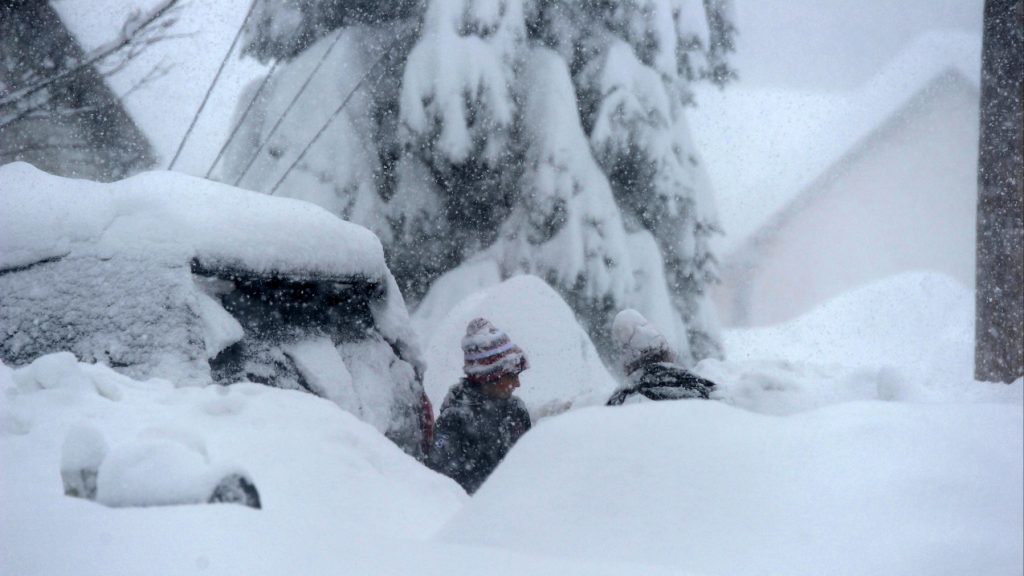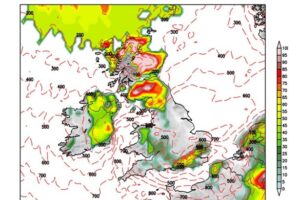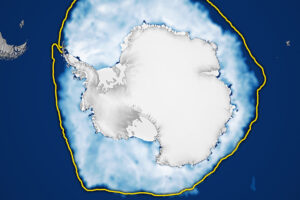
(John Normile/Getty Images)
Last month a number of significant weather events struck the U.S., including late-season Hurricane Nicole and record-breaking lake-effect snow in parts of New York.
Despite an overall average month for temperatures and precipitation, the U.S. saw decreased drought across the nation, according to scientists from NOAA’s National Centers for Environmental Information (NCEI).
Below are highlights from NOAA’s U.S. climate report for November 2022:
Climate by the numbers
November 2022
The average November temperature across the contiguous U.S. was 41.0 degrees F (0.7 of a degree above average), ranking in the middle-third of the November record.
Maine saw its fifth-warmest November on record, Florida saw its seventh warmest and Connecticut, Massachusetts, New Hampshire, Rhode Island and Vermont experienced their top-10 warmest Novembers on record. Temperatures were below average across much of the West — Idaho ranked fourth coldest, Washington ranked sixth and Oregon ranked seventh — while California and Nevada had their top-10 coldest Novembers on record.
The nation’s average precipitation across the contiguous U.S was 2.40 inches (0.17 of an inch above average), ranking in the middle third of the record. Precipitation was below average in portions of the Southwest, central Plains, Ohio Valley and Great Lakes. No state experienced a top-10 wettest or driest November.
Year to date and meteorological autumn
It was a warm meteorological autumn (September through November) across the contiguous U.S. The average autumn temperature was 54.7 degrees F (1.2 degrees above average), ranking among the warmest third of autumns in the historical record. Maine had its fourth-warmest autumn while Massachusetts, New Hampshire, Rhode Island, Vermont and Washington all saw a top-10 warm autumn.
The total autumn precipitation was 5.92 inches (0.96 of an inch below average), which ranked in the driest third of the seasonal record. Nebraska had its fifth-driest autumn while Indiana, Kentucky, Minnesota and South Dakota experienced their top-10 driest autumns on record.
With just one month to go in 2022, the year to date (YTD, January through November) average temperature was 55.2 degrees F — 1.5 degrees above average — ranking as the 17th-warmest such YTD in the 128-year record.
The YTD precipitation total for the contiguous U.S. was 25.61 inches, 1.98 inches below average, ranking in the driest third of the historical record. California saw its second-driest such YTD on record while Nebraska ranked fourth driest and Nevada ranked 11th driest for this 11-month period.
Other notable climate events
Drought conditions improved: According to the November 29 U.S. Drought Monitor report offsite link, about 57.5% of the contiguous U.S. was in drought, down about 5.3% from the beginning of November. Drought conditions expanded or intensified across portions of the Southeast, Great Lakes, Upper Midwest and central Rockies. Drought conditions were alleviated or eliminated across portions of the Northwest, northern and southern Plains, Mississippi Valley and parts of the Northeast and Hawaii.
Parts of New York were hit with record snowfall: A historic lake-effect snowstorm slammed western and northern New York from November 16-20. More than six feet of snow was reported in some areas, closing roads, triggering driving bans and canceling flights. The city of Buffalo set a record for daily snowfall, with 21.5 inches on Saturday, November 19. The previous record was 7.6 inches. As of this writing, NCEI’s State Climate Extremes Committee is investigating whether a new New York state 24-hour snowfall record was set.
Hurricane Nicole wrapped up a destructive hurricane season: The 2022 Atlantic hurricane season officially ended on November 30, producing a total of 14 named tropical systems. There were eight hurricanes and two major (Category 3 or higher) hurricanes. On November 10, Hurricane Nicole made landfall along Florida’s east coast, flooding the shoreline and leaving thousands without power. Nicole was the first hurricane to hit the United States in November in nearly 40 years.
More > Access NOAA’s November climate report and download the images.





